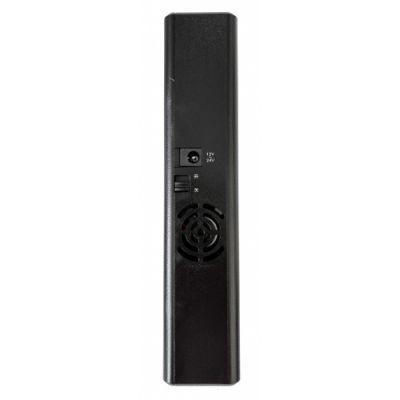How Jammers Could Change the Future of Smart Homes
Description

The rapid rise of smart home technology is transforming how we live, offering unprecedented convenience, security, and connectivity. From smart locks and lights to voice assistants and automated appliances, modern households are increasingly interconnected through wireless networks. However, this very connectivity also introduces new vulnerabilities—particularly to devices known as3G 4G and 5G Jammer.
The Potential Impact on Smart Homes1. Security ThreatsOne of the most serious concerns is the potential for jammers to compromise home security. Many smart home security systems rely on wireless communication to connect cameras, sensors, and alarms. A WiFi Bluetooth Signal Blockers could disable these connections, leaving homes vulnerable to intrusion without triggering any alerts.
2. Loss of FunctionalitySmart home devices depend on stable wireless connections to function properly. Jamming can disrupt the operation of lights, thermostats, smart speakers, and even essential appliances. This can lead to inconvenience, confusion, and potential safety risks—especially for users who rely on automation for daily routines.
3. Privacy RisksJammers can also be used to interfere with devices that monitor or record personal data, such as smart cameras and microphones. This could allow intruders to bypass surveillance or erase evidence of their actions.
4. Emerging CountermeasuresThe threat of jamming is prompting manufacturers to develop new solutions, such as signal encryption, frequency hopping, and wired backup systems. These measures aim to make smart home technologies more resilient, but they also add complexity and cost.
Opportunities and Future DevelopmentsWhile jammers are largely seen as a threat, there are some scenarios where controlled jamming could be beneficial:
- Privacy Control: Homeowners might use The Most Reliable Audio Jammer to intentionally block unauthorized surveillance or data collection devices within their property.
- Network Management: Temporary jamming could be used to test and strengthen the resilience of smart home systems against external attacks.
The proliferation of jammers highlights the delicate balance between the convenience of smart homes and the need for robust security measures. As homes become smarter, it is essential for manufacturers, users, and policymakers to collaborate on standards and technologies that can prevent or mitigate jamming attacks without compromising functionality.
Jammers have the potential to significantly impact the future of smart homes—both as a threat and, in rare cases, as a tool for security and privacy. The ongoing evolution of smart home technology will depend on developing resilient systems that can withstand wireless interference, ensuring that the promise of a connected home remains both safe and reliable.

The Wall